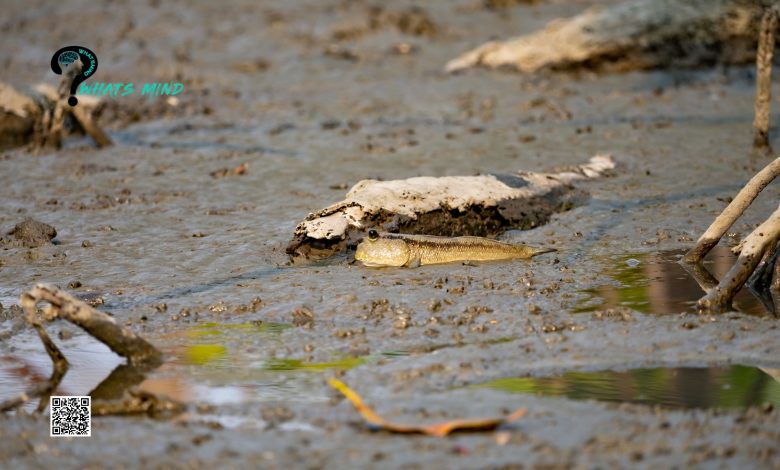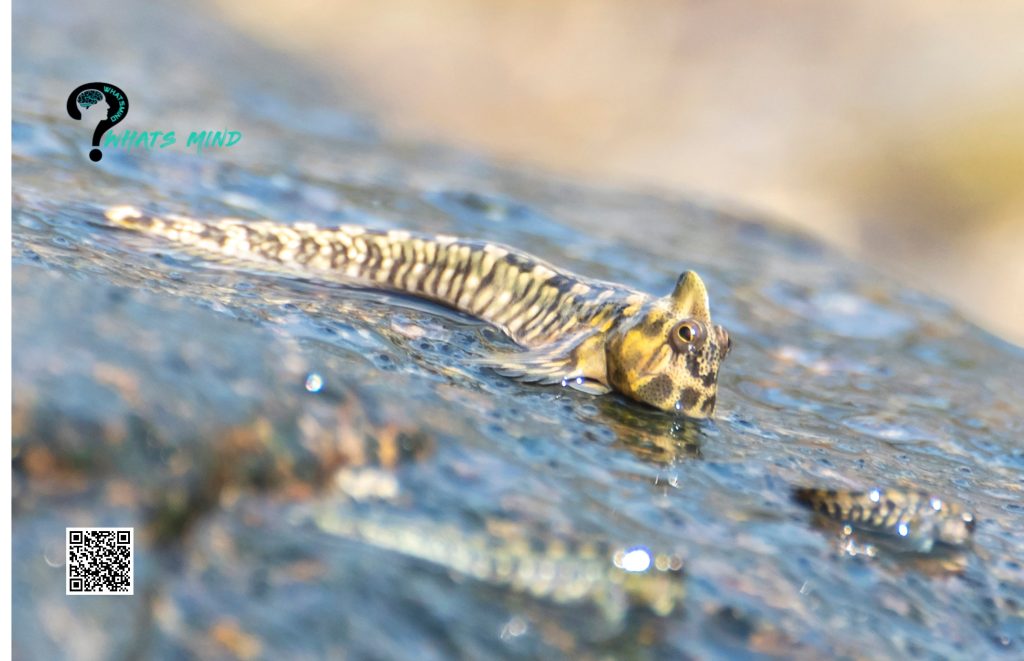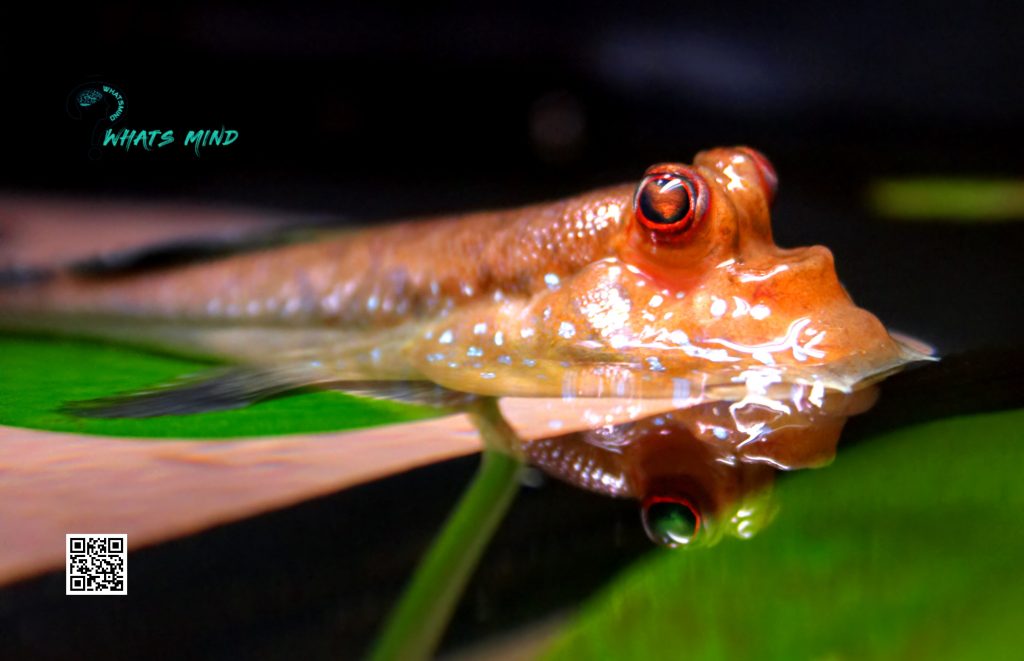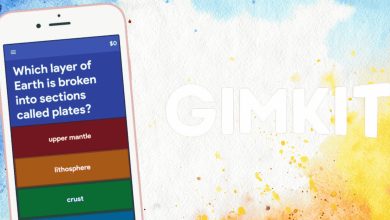How to Keep a Mudskipper as a Pet Guide

A Mudskipper is an interesting little critter or fish-like animal that scampers from exposed holes. Some of them only move an inch at a time while others spring like they’re being propelled by a springboard.
Mudskippers are amphibious fishes that are closely related to gobies dwelling in tropical countries like Australia, Indonesia, and Africa. They can’t line in fresh or salt water but survive in brackish water.
In tidal mudflats, mangrove swamps, and intertidal brackish water, one can find Mudskippers. Moreover, their larger species are found particularly in territorial areas and dwell in huge isolated areas in the wild.
Mudskippers eat crabs, snails, aquatic worms, small fish, fish eggs, algae, other aquatic animals, and organic substances. They can’t reproduce while they’re being held captive, hence one needs to take care of them.
A Mudskipper spends 80% of their time on land out of the water, however, they need water from time to time to keep themselves wet and avoid drying out. Similarly, they can drown in water if they remain in shallow water for long.
Table of Contents
Can Mudskipper Live in a Tank with Other Pets or Animals?

A Mudskipper is known for being a tankmate and also for eating other sea animals in the tank. Some of them have cleared out their all brackish water mates on the tank. However, some people have kept them with other sea creatures and they didn’t eat them alive.
For pet owners and other people who want to keep them in a tank, it’s advised to keep them out of reach from other sea creatures, in case they don’t want them dead.
Some animals might work like this;
- Brackish water shrimps including some species of glass water shrimps.
- Mangrove snails, they’re hard to find but they also remain safe with the critters fish like amphibians.
- Fiddler crabs might remain alive with them as well. However, one can’t be sure as mudskippers are lovers of seafood.
In contrast to these sea animals, Millie’s are usually eaten by them. Henceforth, one must separate them and keep them in different containers.
Can Dogs Have Autism? Symptoms and Possible TreatmentsCan One Keep Plants with a Mudskipper?

Mudskippers love staying under aquatic plants, one must keep them wet so they can survive for longer periods. Non-aquatic plants should have their pots or travels filled with sand. If one wants to keep them with this amphibian fish, they must be sturdy.
The aquatic plants that one can keep with the fish are;
- Anubias
- Bacopa
- Micro swords
- Java moss
- Crypts
Apart from them, semi-aquatic or beach plants including Umbrella grass, Knobbly club rush, and mangroves can be kept at the dry end of the tanks.
Water and Air Parameters for Mudskippers Tanks
For Mudskipper tanks, while topping off evaporated water, one must use dechlorinated freshwater rather than salt water or brackish water. Brackish water is saline and has already salts in it.
Even after the water evaporates, the salts remain in the tank. Hence, one adds fresh water to balance the salinity of the water in the tank. If too much salt water or brackish water evaporates, it can lead to the death of sea plants due to salt intrusion.
Mudskippers can live in ever-changing environments due to their experience with various environmental zones. Hence, the difference in salinity doesn’t affect them much but for the plants, the best gravity is over 1.003 but under 1.009.
A range between 1.003 to 1.015 is suitable for all types of plants in the tank. Apart from that, marine salts should be added to the tanks rather than common salt.
The tank must have a 70-80% humidity level on a hygrometer and the temperature of air and water should be around 24 degrees Celsius to 28 degrees Celsius. The water must be changed every other week, if not every week and the humidity should be kept at 70% at least with maintenance if good airflow.
The pH of the water isn’t necessary for Mudskippers as they can survive in most of the environments. Hence, one doesn’t need to be anxious about it.
Australian Shepherd: Breed History, Appearance, Temperament, Maintenance & Health IssuesWhat Things are Needed to Keep a Mudskipper in a Tank?
The things that are required to keep a mudskipper as a pet in a tank are;
Tank with a lid or a terrarium
- A filter
- Heater
- Substrate (a combination of various types of soil or sand — like river sand, plantation soil, and gravel)
- 2 Thermometer for checking air and water temperature
- Hygrometer
- Marine salt
- Refractometer or a Hydrometer
- Dechlorinator
- Buckets for water changes
- Gravel vac for cleaning
How to Setup a Tank for Mudskippers?
For setting up a tank for Mudskippers, one must know what kind of environment they prefer. Mudskippers need a soft sandy substrate where they can feed and keep moist as well. The sand used in their tanks has a lower impaction risk than gravel and is more comfortable on their skin.
The land and water area in their tank can be separated by large pebbles, a stone tile block, or a chunk of acrylic or driftwood. The land area is usually an amalgamation of ¾ washed river sand and ¼ plantation soil. This mixture provides a good growing substrate for plants and algae growth, which mudskippers like to graze on.
The water area must have a gravel bottom with a filter and a heater in a corner. Moreover, the tank water must not be deeper than half a centimeter from the highest point of the land. Add decorations in or on the tanks, as per your preference.
A lid is essential while setting up the tank because mudskippers will skip away whenever they get the chance.
How to Feed Mudskippers?
A Mudskipper are scavengers in the wild and eat most of the things that come their way. Primarily, they eat diatoms of algae and other protein sources. One can feed Mudskippers three times a week, they will eat everything given to them. Hence, one must not overfeed them.
Feed them on the shoreline as they only eat on the land, not in water. The things one can feed them are:
- Bloodworms
- Brine shrimp
- Small crickets
- Small squid pieces
- Small mussels
- Small feeder fish
- Unsalted nori
- Fish roe
- Most of the saltwater crustaceans
- Fish
- Small insects like crickets
A Mudskipper should be fed until their bellies become plump and then wait until their stomach returns to the normal size to feed them again. Apart from that, they can live up to five years with proper care.
For more info visit Whatsmind.com




